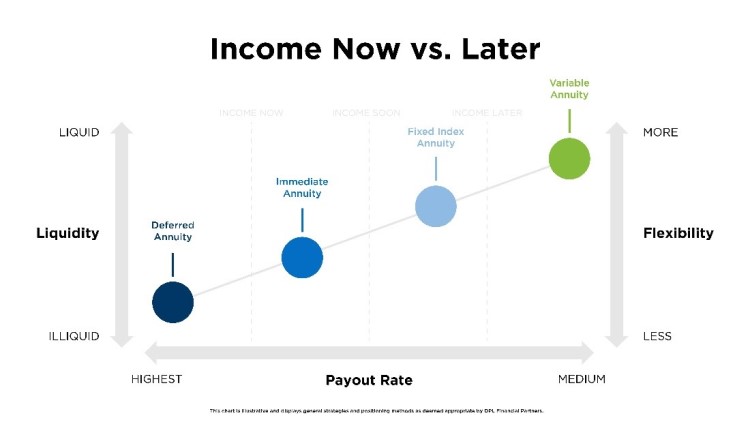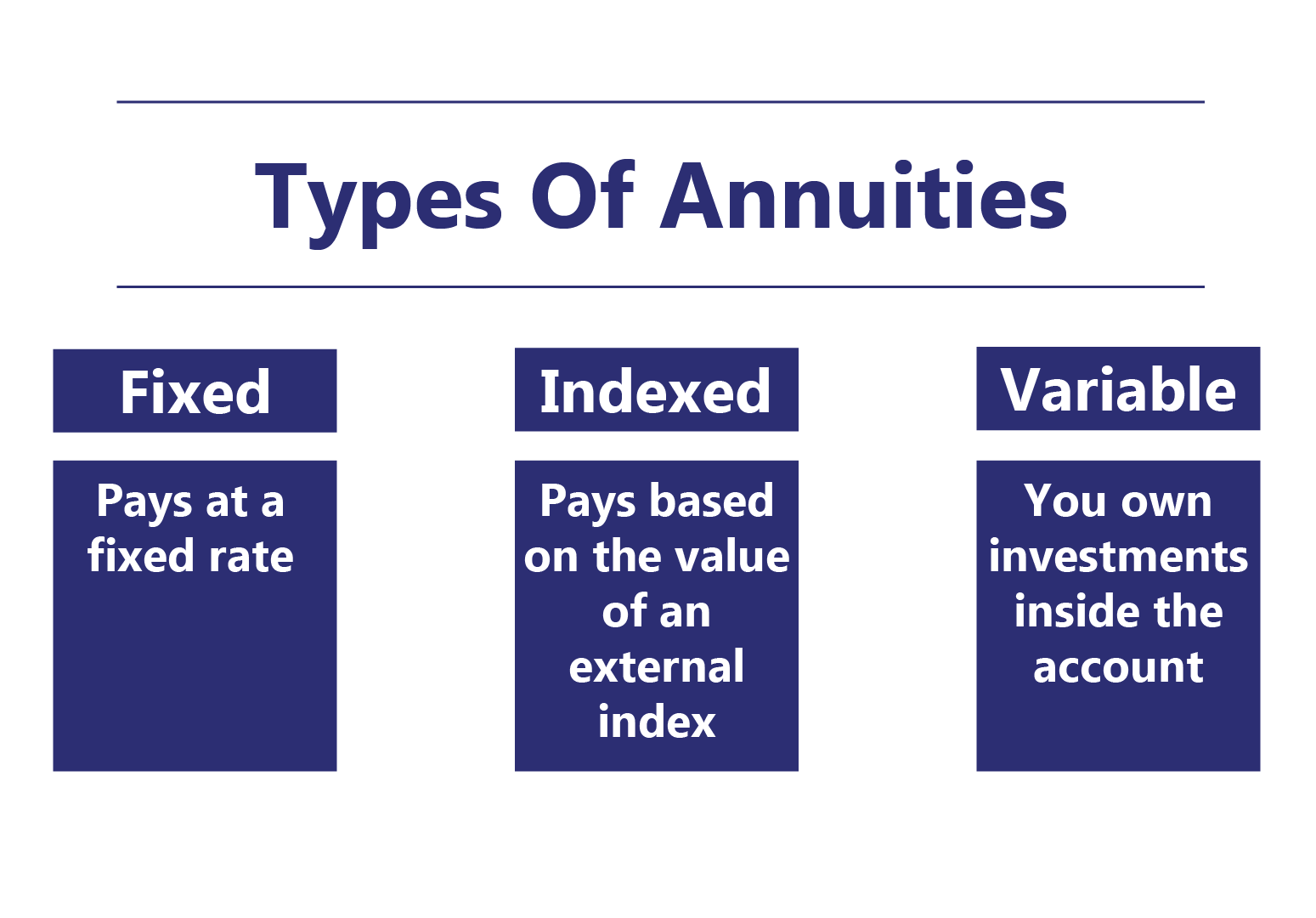All Categories
Featured
Table of Contents
Equally as with a repaired annuity, the owner of a variable annuity pays an insurance provider a swelling sum or collection of settlements for the guarantee of a series of future payments in return. However as stated above, while a fixed annuity grows at a guaranteed, constant price, a variable annuity expands at a variable rate that depends upon the efficiency of the underlying investments, called sub-accounts.

Throughout the buildup phase, properties bought variable annuity sub-accounts grow on a tax-deferred basis and are strained only when the contract proprietor takes out those revenues from the account. After the build-up stage comes the income stage. Gradually, variable annuity possessions should in theory increase in worth up until the contract proprietor determines he or she would love to begin taking out money from the account.
The most significant issue that variable annuities typically present is high cost. Variable annuities have a number of layers of charges and expenses that can, in aggregate, create a drag of up to 3-4% of the agreement's value each year.
Exploring the Basics of Retirement Options Key Insights on Choosing Between Fixed Annuity And Variable Annuity Breaking Down the Basics of What Is Variable Annuity Vs Fixed Annuity Features of Smart Investment Choices Why Annuities Variable Vs Fixed Matters for Retirement Planning Fixed Annuity Vs Variable Annuity: Simplified Key Differences Between Fixed Annuity Vs Variable Annuity Understanding the Risks of Choosing Between Fixed Annuity And Variable Annuity Who Should Consider Strategic Financial Planning? Tips for Choosing the Best Investment Strategy FAQs About Deferred Annuity Vs Variable Annuity Common Mistakes to Avoid When Planning Your Retirement Financial Planning Simplified: Understanding Fixed Vs Variable Annuity A Beginner’s Guide to Variable Annuity Vs Fixed Indexed Annuity A Closer Look at Fixed Income Annuity Vs Variable Annuity
M&E cost charges are computed as a portion of the agreement worth Annuity providers hand down recordkeeping and various other management expenses to the agreement owner. This can be in the type of a level yearly cost or a portion of the agreement value. Management fees may be included as component of the M&E danger fee or might be examined individually.
These fees can range from 0.1% for easy funds to 1.5% or more for proactively taken care of funds. Annuity contracts can be customized in a variety of ways to serve the certain needs of the agreement proprietor. Some usual variable annuity bikers include ensured minimal accumulation advantage (GMAB), guaranteed minimum withdrawal advantage (GMWB), and guaranteed minimal revenue benefit (GMIB).

Variable annuity contributions provide no such tax deduction. Variable annuities have a tendency to be highly inefficient cars for passing riches to the next generation since they do not delight in a cost-basis modification when the original agreement proprietor passes away. When the proprietor of a taxable investment account passes away, the price bases of the investments held in the account are adjusted to mirror the marketplace rates of those financial investments at the time of the owner's fatality.
Exploring Fixed Index Annuity Vs Variable Annuities A Comprehensive Guide to Investment Choices Defining the Right Financial Strategy Pros and Cons of Various Financial Options Why Choosing the Right Financial Strategy Matters for Retirement Planning How to Compare Different Investment Plans: Explained in Detail Key Differences Between Annuity Fixed Vs Variable Understanding the Key Features of Fixed Index Annuity Vs Variable Annuity Who Should Consider Strategic Financial Planning? Tips for Choosing Pros And Cons Of Fixed Annuity And Variable Annuity FAQs About Fixed Annuity Or Variable Annuity Common Mistakes to Avoid When Choosing Fixed Vs Variable Annuity Pros Cons Financial Planning Simplified: Understanding Fixed Vs Variable Annuity Pros And Cons A Beginner’s Guide to Pros And Cons Of Fixed Annuity And Variable Annuity A Closer Look at How to Build a Retirement Plan
Such is not the situation with variable annuities. Investments held within a variable annuity do not get a cost-basis adjustment when the original proprietor of the annuity dies.
One significant issue associated to variable annuities is the possibility for conflicts of rate of interest that may feed on the part of annuity salespeople. Unlike a monetary expert, who has a fiduciary task to make financial investment decisions that profit the customer, an insurance policy broker has no such fiduciary responsibility. Annuity sales are very profitable for the insurance specialists who sell them due to high upfront sales payments.

Lots of variable annuity contracts include language which places a cap on the percent of gain that can be experienced by particular sub-accounts. These caps protect against the annuity proprietor from completely taking part in a section of gains that could or else be enjoyed in years in which markets produce considerable returns. From an outsider's point of view, it would appear that financiers are trading a cap on financial investment returns for the abovementioned assured flooring on financial investment returns.
As kept in mind over, give up fees can significantly restrict an annuity proprietor's ability to move properties out of an annuity in the very early years of the agreement. Even more, while the majority of variable annuities permit agreement proprietors to take out a specified quantity throughout the build-up phase, withdrawals yet quantity typically lead to a company-imposed charge.
Withdrawals made from a set rate of interest financial investment alternative can likewise experience a "market price change" or MVA. An MVA adjusts the worth of the withdrawal to reflect any type of modifications in rate of interest prices from the time that the cash was bought the fixed-rate choice to the time that it was taken out.

Frequently, even the salesmen who sell them do not fully comprehend just how they function, therefore salesmen often prey on a customer's feelings to offer variable annuities as opposed to the benefits and viability of the items themselves. Our company believe that investors should completely comprehend what they possess and just how much they are paying to have it.
Understanding Variable Annuity Vs Fixed Indexed Annuity Key Insights on Your Financial Future Defining Fixed Index Annuity Vs Variable Annuities Pros and Cons of Fixed Indexed Annuity Vs Market-variable Annuity Why Retirement Income Fixed Vs Variable Annuity Matters for Retirement Planning How to Compare Different Investment Plans: Simplified Key Differences Between Different Financial Strategies Understanding the Key Features of Fixed Index Annuity Vs Variable Annuity Who Should Consider Strategic Financial Planning? Tips for Choosing the Best Investment Strategy FAQs About Planning Your Financial Future Common Mistakes to Avoid When Choosing Pros And Cons Of Fixed Annuity And Variable Annuity Financial Planning Simplified: Understanding Your Options A Beginner’s Guide to Fixed Annuity Or Variable Annuity A Closer Look at Fixed Vs Variable Annuities
The exact same can not be claimed for variable annuity assets held in fixed-rate financial investments. These assets legitimately come from the insurance coverage company and would certainly as a result be at threat if the business were to fall short. Similarly, any guarantees that the insurance coverage company has consented to offer, such as an assured minimal income advantage, would certainly be in question in case of a service failure.
Therefore, prospective buyers of variable annuities must recognize and take into consideration the financial problem of the releasing insurer prior to participating in an annuity contract. While the benefits and disadvantages of different types of annuities can be questioned, the actual issue surrounding annuities is that of suitability. Simply put, the question is: that should have a variable annuity? This concern can be challenging to answer, provided the myriad variations available in the variable annuity cosmos, however there are some fundamental standards that can help investors decide whether annuities ought to contribute in their monetary strategies.
After all, as the stating goes: "Purchaser beware!" This article is prepared by Pekin Hardy Strauss, Inc. Fixed annuity rates. ("Pekin Hardy," dba Pekin Hardy Strauss Riches Management) for informative functions just and is not meant as a deal or solicitation for organization. The information and information in this write-up does not constitute lawful, tax obligation, accounting, financial investment, or other specialist recommendations
Table of Contents
Latest Posts
Decoding How Investment Plans Work Everything You Need to Know About Financial Strategies Breaking Down the Basics of Investment Plans Advantages and Disadvantages of Different Retirement Plans Why Ch
Exploring Variable Annuity Vs Fixed Indexed Annuity Everything You Need to Know About Fixed Vs Variable Annuity Pros Cons Breaking Down the Basics of Variable Annuity Vs Fixed Indexed Annuity Features
Decoding Fixed Index Annuity Vs Variable Annuities A Closer Look at Fixed Annuity Vs Equity-linked Variable Annuity Breaking Down the Basics of Variable Vs Fixed Annuities Pros and Cons of Various Fin
More
Latest Posts